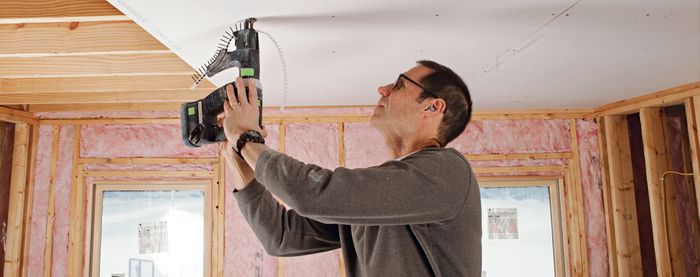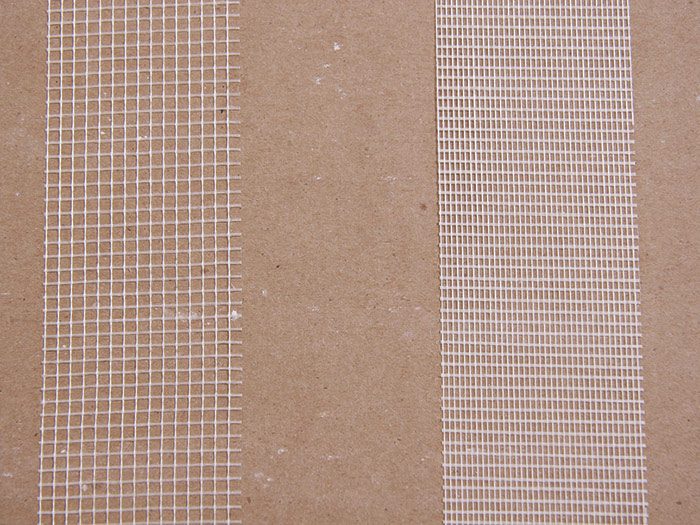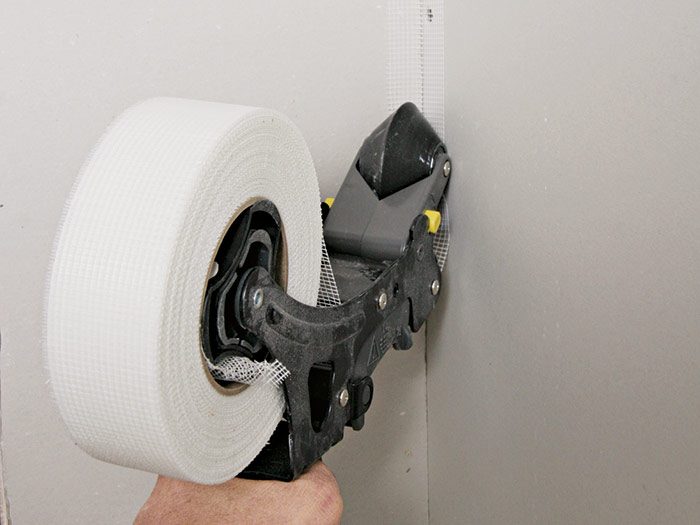Drywall Joint Tape
Paper or mesh? They both have their applications and advantages.
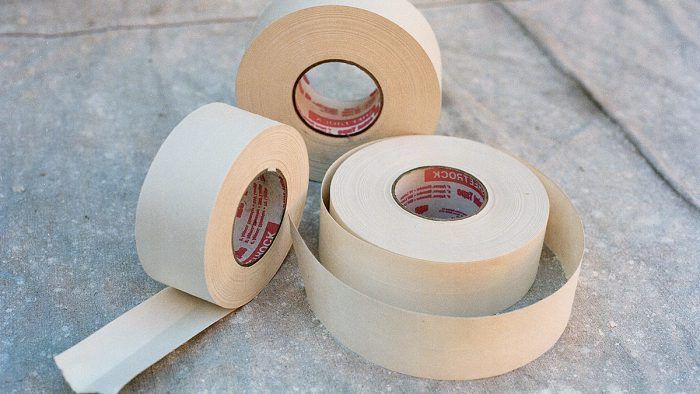
Joint tape is used to reinforce seams and corners and to repair cracks and holes in drywall and plaster. There are two types of tape: pre-creased paper tape and fiberglass-mesh tape.
Paper tape Not long ago, paper tape was the only tape you could buy. It is still the most widely used tape and is a good all-around tape for seams, cracks, and small holes. Available in rolls 2 in. wide and 250 ft. or 500 ft. long, paper tape has a light crease down the center, which helps it fold easily for use on inside corners.
Paper tape has a number of advantages and uses over mesh tape:
- It is stronger than most types of mesh tape and not as likely to be torn by taping tools.
- It resists stretching and wrinkling more effectively than mesh tape does.
- It is easier to install in corners because the crease makes it easy to keep the tape centered and straight.
- It is less expensive than mesh tape.
On the downside, paper tape is more time-consuming to apply (it has to be embedded in a coat of compound) and is prone to bubbling if you don’t apply enough compound or embed it tight enough.
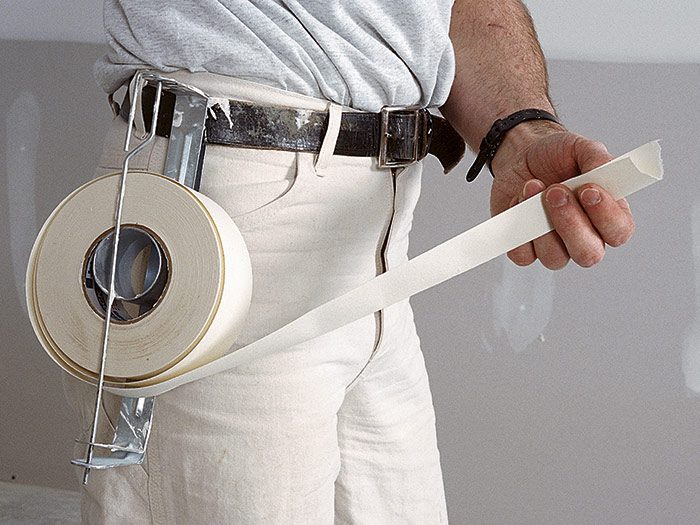
Fiberglass-mesh tape This tape is commonly used for taping tapered seams and for patching cracks and small holes. It is also used to reinforce gaps between panels or corners that are more than 1/4 in. wide. Mesh tape can be used on regular inside corners, but it is hard to keep centered and straight. A few companies, however, are now making a tool that creases and places the mesh tape in the corners, so mesh is becoming more widely used to tape inside corners as well.
Fiberglass-mesh tape comes in rolls that are 2 in. or 2-1/2 in. wide and 300 ft. or 500 ft. long. There are two types: self-adhesive tape, which is simply pressed in place over a seam, and non-adhesive (or plain) tape. In addition, there are two types of self-adhesive mesh tapes. One is traditional leno-weave mesh, which, when used with a drying-type joint compound, is subject to cracking and stretching when a joint is under stress. The other is a newer tape with a cross-fiber design that adds greater strength and crack resistance to joints than the older style. Non-adhesive tape is less expensive but not as easy to work with as the self-adhesive varieties (it has to be stapled in place over a seam). All types of mesh tape can be cut with a utility knife or the sharp edge of a trowel.
| THINK AHEAD: Always store open rolls of self-adhesive mesh tape in a plastic bag between uses to prevent the tape from drying out and losing its adhesiveness. |
Mesh tape does have its advantages over paper tape:
- When taping by hand, mesh tape is faster to embed than paper tape.
- It can be as strong as paper if it’s embedded in a setting compound.
- Unlike paper tape, mesh tape is not prone to developing air bubbles under the surface of the tape.
If you’re taping a lot of seams, a handy tool to have at your side is a tape reel (also known as a tape holder). The reel, which attaches to your belt, can hold up to a 500-ft. roll and works with both paper and mesh tapes. The tape rolls off the reel for quick and easy tear off. For fiberglass-mesh tape, I prefer a roll-on tape dispenser, which works like a tape dispenser for packaging tape, allowing you to apply the tape directly from the dispenser to the wall.
